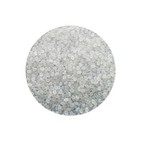Features of HDPE
High-density polyethylene has good heat resistance and cold resistance, good chemical stability, high rigidity and toughness, and good mechanical strength. Dielectric properties and environmental stress crack resistance are also good. Hardness, tensile strength and creep are better than low density polyethylene; wear resistance, electrical insulation, toughness and cold resistance are better, but slightly worse than low density insulation; chemical stability is good, at room temperature Under certain conditions, it is insoluble in any organic solvent, resistant to corrosion by acid, alkali and various salts; the film has low permeability to water vapor and air, low water absorption; poor aging resistance, environmental cracking resistance is not as good as low density polyethylene, In particular, thermal oxidation will reduce its performance, so the resin needs to be added with antioxidants and ultraviolet absorbers to improve and improve this deficiency. The heat distortion temperature of high-density polyethylene film under stress is low, which should be paid attention to when applying.
The most common production method of PE is through slurry or gas phase processing, and a few are produced by solution phase processing. All of these processes are exothermic reactions involving ethylene monomer, alpha-olefin monomer, catalyst system (possibly more than one compound), and various types of hydrocarbon diluents. Hydrogen and some catalysts are used to control molecular weight. The slurry reactor is typically a stirred tank or a more common type of large loop reactor in which the slurry can be circulated and stirred. Polyethylene particles are formed as soon as ethylene and comonomer (as needed) and catalyst come into contact. After removal of the diluent, the polyethylene granules or granules are dried and dosed with additives to produce pellets. A modern line with large reactors with twin screw extruders capable of producing over 40,000 pounds of PE per hour. The development of new catalysts contributes to improving the properties of new grades of HDPE. The two most commonly used catalyst classes are Philips' chromium oxide based catalysts and titanium compound monoalkylaluminum catalysts. HDPE produced by Philips-type catalysts has a medium-broad molecular weight distribution; titanium-alkylaluminum catalysts produced a narrow molecular weight distribution. The catalysts used in the production of narrow MDW polymers using the double reactor can also be used to produce broad MDW grades. For example, two reactors in series producing products of significantly different molecular weights can produce bimodal molecular weight polymers with a broad molecular weight distribution.




